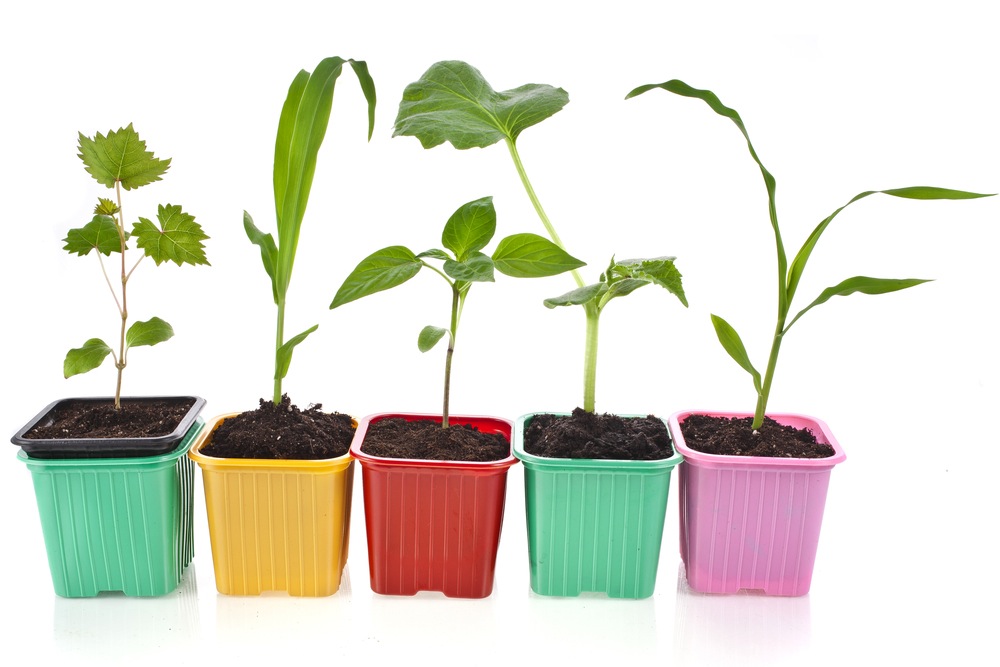Simple Plant Science Experiments for Kids

Interacting with plants is good for kids, but even when it's too cold to get outside and into the yard or garden, you can still use some simple plant science experiments to sharpen your little ones’ interest in seeds and plants. These activities are designed to appeal to kids ages 4 to 6.
Produce section science
Start with a field trip to your local grocery store. Stroll through the produce section and help children name all the different fruits and vegetables in the market. Talk with them about which ones they have eaten. Identify which forms of produce are scientifically classified as fruits (the female parts of plants that have seeds), and which are vegetables (edible roots, leaves or stems).
Use the information provided by the store to find out where the produce was grown, and then later look for these places on a globe or map. Use online resources or books to find out how produce is shipped to your local store.
Have younger children describe the sizes, colors, shapes, scents and textures of the produce. While you are at the store, pick up samples of several different fruits for the next activity. Suggestions: apples (at least two varieties), oranges, strawberries, avocados, tomatoes, bananas, pomegranates, seeded grapes, green beans, sugar snap peas.
Comparing fruits
Back at home, help your child cut into the various fruits and identify different parts of the fruit. Point out the layers of the fruit — the skin, the fleshy or juicy mesocarp (which is often the edible part of the fruit) and the seed. Ask the children why they think the fruit has these different layers.
Point out that new baby plants grow from seeds that must be protected and moved to new ground where they can grow. Ask children to speculate as to why they think so many fruits are so sweet and tasty. Ask older children to count the number of seeds they find in each type of fruit. If appropriate, ask how this information could be displayed or communicated and help them to construct a simple data table with the names of the fruits and the number of seeds they counted.
Help younger children compare the fruits by showing you which fruits have larger or smaller seeds, whether the seeds are inside or outside of the fruit, whether the seeds seem to be hard or soft. Many children are surprised that the tiny black dots in bananas are actually the seeds; reassure timid youngsters that eating the seeds is perfectly okay.
Get the world’s most fascinating discoveries delivered straight to your inbox.
Seed museum
Create a collection of seeds from different types of fruits and vegetable.
What you will need:
- Paper towels
- Large glass jar
- At least two packets of different fast-sprouting seeds (such as lima beans, zucchini, radish, sunflower, zinnia, radish, lettuce, marigold, chives or basil)
- Glass marking pencil
- Aluminum foil
What to do:
- Use the glass marking pencil to make lines on the outside of the jar and label separate areas for each of your seed types.
- Moisten the paper towels with enough water to make them damp, but not sopping wet. Line the inside of the jar with the moistened paper towels.
- Carefully insert each type of seed between the layer of damp toweling and the side of the glass jar. Put the seeds about an inch below the top of the jar. You should be able to observe the seeds through the glass.
- Cover the outside of the jar with aluminum foil and keep the jar in a warm, protected place.
- Every day, remove the foil and observe the seeds. Keep the paper towels moist, and replace the foil after your observations.
- Compare the ways in which the different types of seeds sprout.
Variation
For younger children, use one type of seed (I suggest the lima beans, as they are large enough for little hands to grasp easily). Instead of a jar, put the seeds and paper towels into plastic bags with a zip closure. Leave a small corner of the top open for air circulation. Prepare three seed bags. Place one in the refrigerator; tape one to the inside of a sunny window, and put one on a shelf inside the room. Ask the children to predict which seeds will sprout first. Talk about the conditions that seeds need for germination.
What do plants need?
Ask children what a plant needs to grow. Obtain several small flowerpots and a packet of fast-sprouting seeds (see suggestions above). Plant seeds in several pots kept under different conditions and compare the growth of the plants.
Suggested conditions:
- Different amounts of sunlight
- Different soils: garden potting soil, sand, clay, powdered charcoal. Ask children to suggest other materials they would like to try planting in!
- Different liquids used to “water” the plants
- Don’t forget to keep a “control” plant under what the child feels would be the best conditions for plant growth.
Crowded seeds
Many seed packets instruct the gardener to sow the seeds and then thin out the seedlings to a given distance. Have your child plant identical seeds in two different pots. In one pot, plant the seeds the recommended distance apart or thin the seedlings when they come up. In the second pot, plant several seeds very close together or allow the seedlings to grow without thinning. Keep the pots in a warm, sunny location and keep the soil moist. Observe how crowding affects the growing plants.
Plants and gardening can provide endless opportunities for observation and experimentation. Try some of these activities indoors. When the weather finally warms, expand your observations to the great outdoors!
Related:


